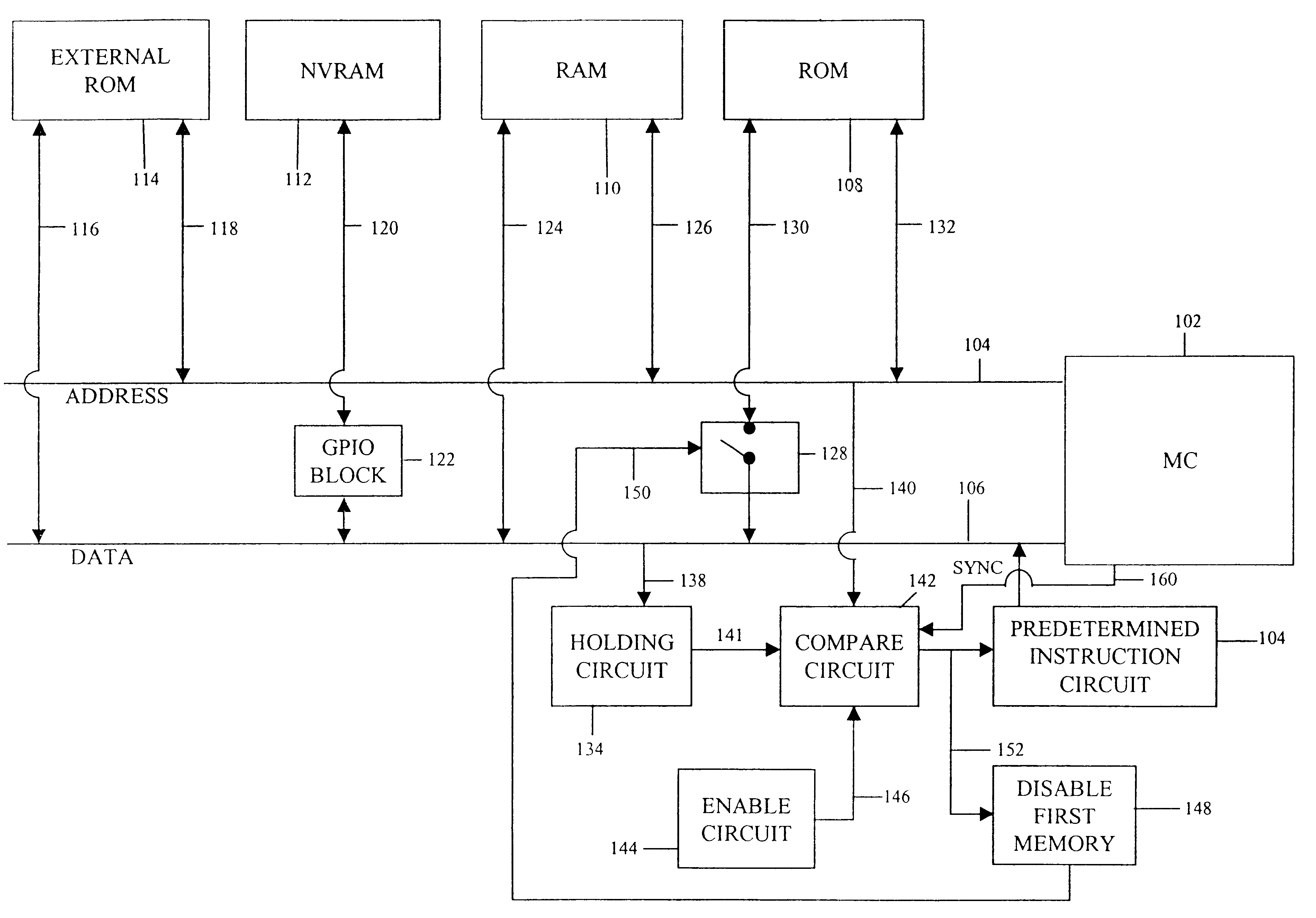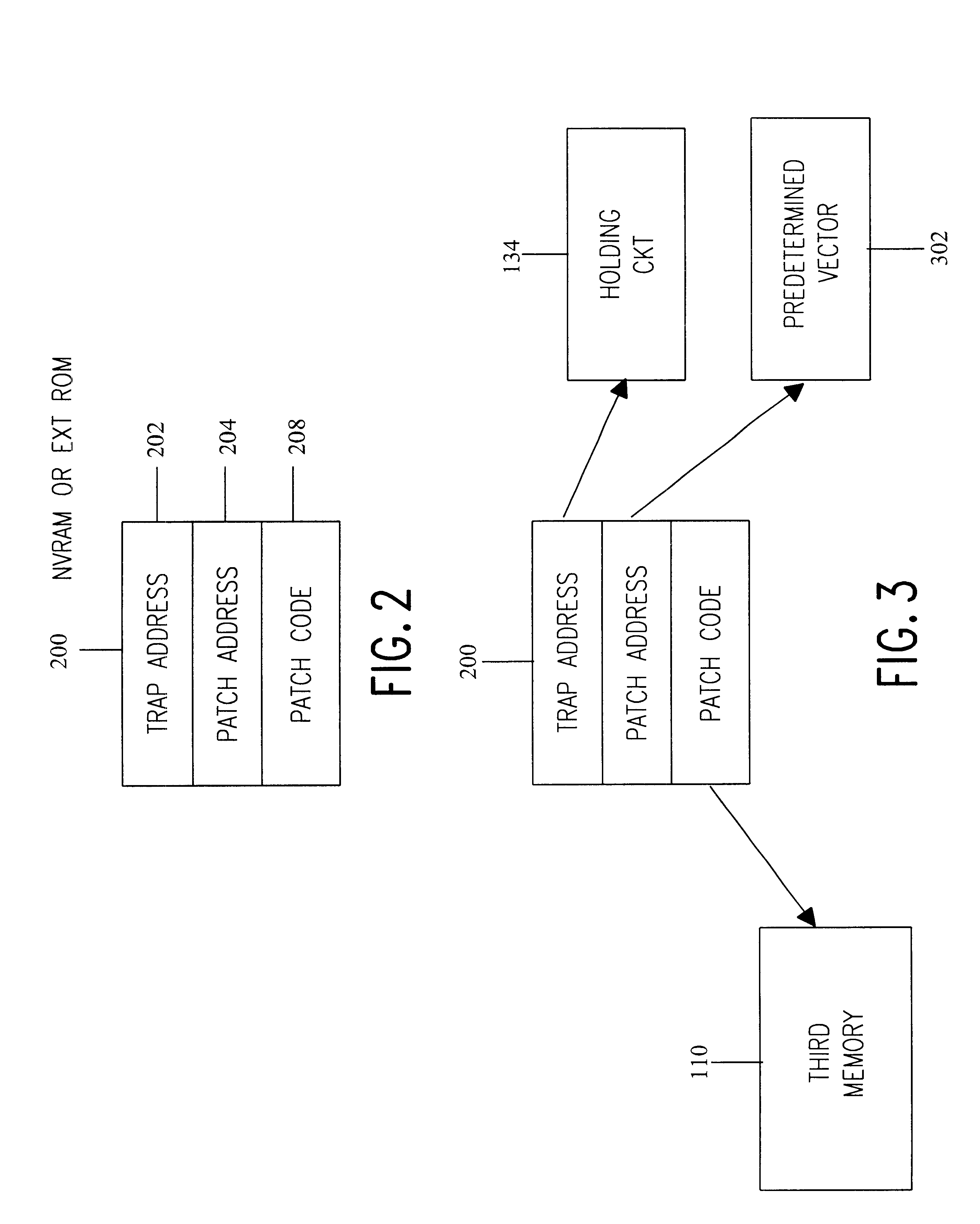System and method for providing a trap and patch function to low power, cost conscious, and space constrained applications
a software and patch function technology, applied in the field of system and method for providing a software trap and patch function to low power and space constrained applications, can solve the problems of prohibitively expensive scrap device, unfavorable product shipment, and bug or program error within pre-programmed cod
- Summary
- Abstract
- Description
- Claims
- Application Information
AI Technical Summary
Benefits of technology
Problems solved by technology
Method used
Image
Examples
Embodiment Construction
An implementation example of the subject invention will now be described. In this example, the microprocessor is a Rockwell MC19 CMOS 8-bit microprocessor, a microprocessor which is software compatible with the Rockwell 65C02 microprocessor. The architecture of the MC19 is illustrated in FIG. 6. As indicated, the MC19 has a 16 bit external address bus, identified by numerals 600a and 600b, with numeral 600a identifying the low byte of the address bus, and numeral 600b identifying the high byte of the address bus. The external data bus of the MC19 is an 8 bit bus, identified with numeral 601. The program counter of the MC19 is identified with numeral 603. As indicated, the program counter is divided into a high byte, designated PCH, and a low byte, designated PCL, to achieve compatibility with the internal data bus 606, which is 8 bits wide. That is, the PC is divided into upper and lower bytes to allow the contents of the PC to be accessible over the internal data bus through succes...
PUM
 Login to View More
Login to View More Abstract
Description
Claims
Application Information
 Login to View More
Login to View More - R&D
- Intellectual Property
- Life Sciences
- Materials
- Tech Scout
- Unparalleled Data Quality
- Higher Quality Content
- 60% Fewer Hallucinations
Browse by: Latest US Patents, China's latest patents, Technical Efficacy Thesaurus, Application Domain, Technology Topic, Popular Technical Reports.
© 2025 PatSnap. All rights reserved.Legal|Privacy policy|Modern Slavery Act Transparency Statement|Sitemap|About US| Contact US: help@patsnap.com



